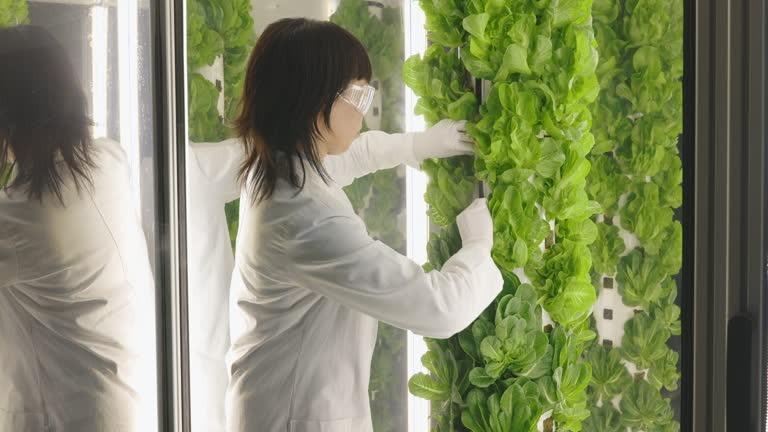Growing Up: The Ultimate Guide to the Hydroponic Tower and Vertical Garden Lifestyle

In an increasingly urbanized world, the dream of a bountiful, fresh garden often seems out of reach. However, a technological marvel has brought that dream back into the home: the hydroponic tower. This innovative structure is much more than a gardening tool; it's a lifestyle upgrade, allowing anyone to cultivate a thriving vertical garden filled with leafy greens, herbs, and even fruits, regardless of the size of their living space.
Understanding the Mechanics of a Hydroponic Tower
At its heart, a hydroponic tower is an advanced system that swaps traditional soil for a nutrient-rich water reservoir. The tower, a vertical stack of growing pots, utilizes a water pump to circulate the solution. Water travels to the top, then gravity pulls it down, gently cascading over the roots of each plant before returning to the reservoir.
Aeroponics: Maximizing Oxygen for Roots
The efficiency of many modern hydroponic tower designs stems from a technique called aeroponics—a sub-category of hydroponics. Instead of running water continuously, the system is timed to have regular 'off' intervals. This deliberate pause exposes the roots to the air, allowing them to absorb oxygen more easily than when submerged. This crucial aeration period is a key factor in the 3x faster growth rate often achieved compared to soil gardening, leading to robust and healthy plants.
Optimal Construction for Durable Gardening
A high-quality hydroponic towers is built to last and designed for safety. Using durable, food-grade, BPA-free material is essential for ensuring the produce grown is the healthiest possible. Look for thick-walled construction—around 2mm—which prevents cracking or warping and provides robust support. A smart design, such as one with widely spaced pots, ensures each of the 24 (or more) plants has ample room to grow, preventing them from competing for light and water, which could otherwise stunt their development.
Versatility: Indoors, Outdoors, and All Year Round
One of the most compelling arguments for adopting a hydroponic tower is its incredible versatility. It is engineered to flow with the seasons and the changing needs of the gardener.
The Role of Grow Lights
For indoor cultivation, the inclusion of broad-spectrum LED grow lights is a game-changer. Light is essentially the "food" for plants, triggering the process of photosynthesis. A broad-spectrum light is crucial because plants require different wavelengths for different stages—blue light for young plants, and a full spectrum for flowering and fruit-bearing. The best systems feature lights that are:
-
Adjustable and Rotatable: Allowing the gardener to move them closer to younger seedlings and further away as the plants mature for optimal light exposure.
-
Automated with a Timer: A built-in timer ensures a regular, healthy light schedule (e.g., 12–14 hours on, 10–12 hours off), as plants, like humans, need a regular rest period.
Seamless Indoor-Outdoor Transition
The portability of a good hydroponic tower—often enhanced with wheels—allows for easy movement. This means you can keep your vertical garden outdoors during mild seasons to take advantage of natural sunlight and easier pollination for fruiting plants like tomatoes and cucumbers. When temperatures drop or rise too much, the tower can be effortlessly moved indoors to continue producing fresh food year-round.
Maintaining Your Thriving Vertical Garden
Successfully maintaining a hydroponic tower involves monitoring a few key elements, all of which are simplified by the system’s design:
-
Nutrient Solution: Regularly checking the water level is necessary to ensure the pump never runs dry. Nutrients must be replenished as plants absorb them.
-
Watering Schedule: Using the built-in timer to establish a cycle of watering on and off periods is key to maximizing root oxygen absorption.
-
Pest Control: The absence of soil drastically reduces the presence of pests, making maintenance much simpler than traditional gardening.
The ability to grow a diverse array of produce—from arugula and basil to strawberries and various peppers—in a compact, clean, and sustainable way makes the hydroponic tower a powerful tool for modern, self-sufficient living.
Conclusion
The hydroponic tower has firmly established itself as the future of home-based agriculture. It provides a superior, sustainable, and highly efficient method to cultivate a flourishing vertical garden, yielding fresh, organically grown food with minimal water and space. This technology empowers individuals to take control of their food source, turning any corner of a home into a productive farm. To experience the advanced features of a vertical gardening system designed for optimal growth, explore the ALTO Garden GX Tower.
- Art
- Causes
- Crafts
- Dance
- Drinks
- Film
- Fitness
- Food
- Jeux
- Gardening
- Health
- Domicile
- Literature
- Music
- Networking
- Autre
- Party
- Religion
- Shopping
- Sports
- Theater
- Wellness


